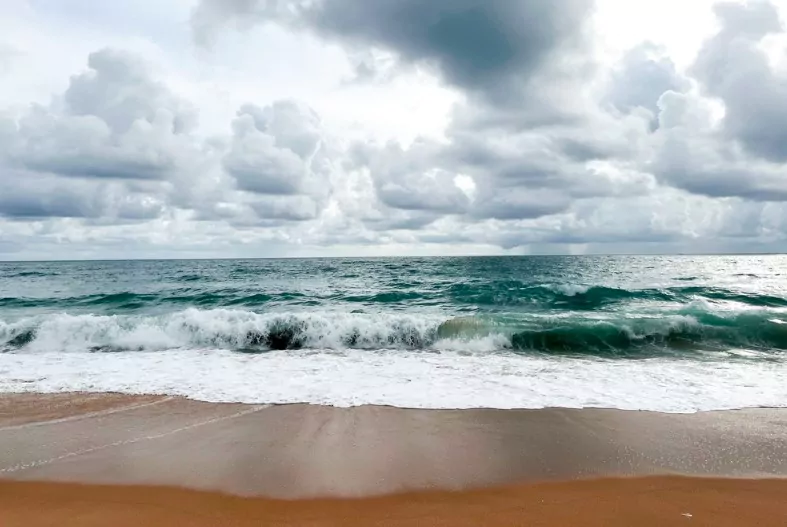Best Time to Visit Thailand For Vacation

Thailand, nestled in the heart of Southeast Asia, is an affordable destination that offers a blend of captivating culture, stunning landscapes, and vibrant nightlife. One of the key factors that can define your Thailand experience is the timing of your time to visit Thailand. With the diverse climate that varies across its regions, knowing the best time to visit Thailand can ensure you make the most of your trip.
- Understanding Thailand's Weather: A Brief Overview
- Summer Season: Scorching Heat and Blue Skies
- Rainy Season: Lush Landscapes and Fewer Tourists
- Winter Season: Comfortable Weather and Peak Tourist Activities
- Decoding Thailand's Coasts: East vs. West
- Northern Thailand: Chiang Mai and Chiang Rai
- Local Festivals and Events
- Other Factors to Consider
- Wrapping Up: So, When Is The Best Time to Visit Thailand?
1 Understanding Thailand's Weather: A Brief Overview
Thailand’s weather is generally divided into three main seasons: the hot season, the rainy season, and the cool season. However, the climate differs between the eastern and western coasts of the country, creating distinct patterns of good weather in Thailand’s east coast and west coast, further complicating the ideal time to visit.
2 Summer Season: Scorching Heat and Blue Skies

Running from March to early June, the hot season witnesses scorching heat. This time is particularly hot in the northern regions like Chiang Mai and Chiang Rai. April, the hottest month, coincides with the Songkran festival, which is Thailand’s traditional New Year celebration. If you’re looking to immerse yourself in Thai culture and don’t mind the heat, this coolest month is a fabulous time to visit.
3 Rainy Season: Lush Landscapes and Fewer Tourists

Following the hot season is the rainy season, which spans from mid-October to early October. This is when Thailand experiences the most rainfall, especially in regions by the Andaman Sea, like the west coast and islands like Koh Lanta. While you might encounter a rainy day or two, it’s also a time of fewer tourists, making it perfect for those on a tight budget. However, note that the east coast and the Gulf coast, with islands like Koh Samui (often spelled Ko Samui) and Koh Tao, see less rainfall during this period, making them viable alternatives for beach lovers.
4 Winter Season: Comfortable Weather and Peak Tourist Activities

The cool and dry season is between November and February. Here, average temperatures range from 20°C to 28°C. It’s an ideal weather window, especially for outdoor activities, as cooler temperatures are combined with dry weather. This winter season attracts the most tourists, so expect crowded attractions and higher prices.
5 Decoding Thailand's Coasts: East vs. West
The eastern coast, which includes destinations like Koh Samui, Koh Phangan (or Ko Pha Ngan), and Koh Tao, experiences its peak tourist season between January and August. The rainy season in this region is from September to December. However, even during this wet, rainy season, the rain showers are often short-lived, ensuring there’s ample sunshine for beachgoers.
On the other hand, Thailand’s west coast, lining the Andaman coast, gulf islands such as Phuket and Koh Lanta, faces the monsoon season from mid-October to early April. The dry season on this side is between November and March. If you’re planning a visit to both coasts, the shoulder season, which is the months just before and after the peak season, offers a balanced experience.
6 Northern Thailand: Chiang Mai and Chiang Rai

Northern Thailand, encompassing cities like Chiang Mai and Chiang Rai, is best visited between November and February. These winter months provide cool breezes and blue skies, making it the best season for temple hopping and mountain trekking. The cooler climate varies and temperatures range between 15°C to 25°C.
7 Local Festivals and Events

If you’re timing your trip around local events, the Songkran festival in early April is an experience not to be missed. However, prepare for crowds as it coincides with the hot season’s peak.
8 Other Factors to Consider

- Shoulder Season: Falling between peak and off-peak seasons, the shoulder season offers a balanced experience. There are fewer tourists, the weather remains fairly predictable, and prices are more affordable. For Thailand, this typically means late April and early October.
- Koh Lanta and Andaman Coast: If diving is on your agenda, visiting during the dry season is ideal. The Andaman west coast side, especially, boasts great weather during the winter months.
- Festivals: Songkran in April or the Lantern Festival in Chiang Mai in November can determine the timing of your visit.
- Budget Considerations: As an affordable destination, Thailand can be visited year-round. But for those on a tight budget, the low season, despite occasional rain showers, offers slashed prices and fewer crowds.

9 Wrapping Up: So, When Is The Best Time to Visit Thailand?
The best time to visit Thailand truly depends on the experiences you’re seeking.
- For ideal weather across the country, especially in Northern Thailand and the Andaman coast, the cool, wet season between November and February stands out.
- If you’re looking to explore the eastern coast with islands like Ko Samui, consider January to August.
- For those who prefer fewer crowds and can handle a rainy day or two, the rainy season in Thailand offers a serene environment, especially in the southern regions.
- Budget travellers might find the low season more affordable than the high season, despite the risk of heavy rainfall.
Remember, while Thailand’s weather plays a pivotal role, the nation remains a year-round destination. Whether it’s the cool breeze of Chiang Mai, the great weather Andaman sea side of Koh Chang, or the drier season in Koh Tao, every season in Thailand holds its unique charm. So pack your bags, and let Thailand’s myriad experiences enchant you!
Community Q&A
About This Article
This article has been viewed 137 times.



